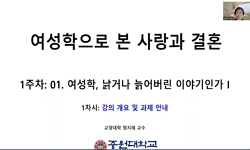Purpose: The purposes of this study were to identify the prevalence and influencing factors of fecal incontinence,and to analyze the association between fecal incontinence and depression. Methods: The subjects of this studywere 233 women living in rur...
http://chineseinput.net/에서 pinyin(병음)방식으로 중국어를 변환할 수 있습니다.
변환된 중국어를 복사하여 사용하시면 됩니다.
- 中文 을 입력하시려면 zhongwen을 입력하시고 space를누르시면됩니다.
- 北京 을 입력하시려면 beijing을 입력하시고 space를 누르시면 됩니다.
https://www.riss.kr/link?id=A104622369
- 저자
- 발행기관
- 학술지명
- 권호사항
-
발행연도
2014
-
작성언어
Korean
-
주제어
변실금 ; 우울 ; 여성 ; Fecal incontinence ; Depression ; Women
-
등재정보
KCI등재,SCOPUS
-
자료형태
학술저널
- 발행기관 URL
-
수록면
198-206(9쪽)
-
KCI 피인용횟수
0
- DOI식별코드
- 제공처
-
0
상세조회 -
0
다운로드
부가정보
다국어 초록 (Multilingual Abstract)
Conclusion: These results suggest that there should be supports by public health care for fecal incontinence preventionand care programs in order to promote the physical and emotional health of rural women.
Purpose: The purposes of this study were to identify the prevalence and influencing factors of fecal incontinence,and to analyze the association between fecal incontinence and depression. Methods: The subjects of this studywere 233 women living in rural areas, and data were collected using questionnaires from February 24 to May 30,2012. Fecal incontinence was measured with the Continence Grading Score, and depression with the GeriatricDepression Scale. Collected data were analyzed using SPSS through x2-test, Fisher’s exact test, t-test andANOVA. Results: Of the subjects, 16.7% had fecal incontinence. The prevalence of fecal incontinence was higherin older women (x2=23.55, p<.001), those with vaginal delivery (x2=4.81, p=.049), those with parity of 4 or more(x2=13.47, p=.003), and those with urinary incontinence (x2=26.36, p<.001). The level of depression was significantlyhigher in older women (F=19.27, p<.001), those with low academic qualification (F=18.17, p<.001),those with urinary incontinence (F=4.15, p=.043), and those with fecal incontinence (F=14.90, p<.001).
Conclusion: These results suggest that there should be supports by public health care for fecal incontinence preventionand care programs in order to promote the physical and emotional health of rural women.
참고문헌 (Reference)
1 문영주, "자연 분만력의 횟수가 하부 비뇨생식기의 기능에 미치는 영향" 대한산부인과학회 50 (50): 638-644, 2007
2 박성희, "임신 및 출산 여성의 요실금 및 대변실금 예방을 위한 케겔운동의 효과: 체계적 문헌 고찰" 한국간호과학회 43 (43): 420-430, 2013
3 박수경, "대변실금의 진단과 치료" 대한내과학회 83 (83): 580-584, 2012
4 Hwang JS, "The prevalence of female urinary and fecal incontinence" 41 (41): 1552-1559, 1998
5 Sallis O. Yip, "The association between urinary and fecal incontinence and social isolation in older women" Elsevier BV 208 (208): 146.e1-146.e7, 2013
6 Bharucha AE, "Slow-transit constipation" 4 (4): 309-315, 2001
7 Matthews CA, "Risk factors for urinary, fecal, or dual incontinence in the nurses' health study" 122 (122): 539-545, 2013
8 Bartlett L, "Reasons for non-disclosure of faecal incontinence : A comparison between two survey methods" 11 (11): 251-257, 2007
9 Berger MB, "Racial defferences in fecal incontinence in community-dwelling women from the EPI study" 19 (19): 169-174, 2013
10 Ivo Ditah, "Prevalence, Trends, and Risk Factors for Fecal Incontinence in United States Adults, 2005–2010" Elsevier BV 12 (12): 636-643.e2, 2014
1 문영주, "자연 분만력의 횟수가 하부 비뇨생식기의 기능에 미치는 영향" 대한산부인과학회 50 (50): 638-644, 2007
2 박성희, "임신 및 출산 여성의 요실금 및 대변실금 예방을 위한 케겔운동의 효과: 체계적 문헌 고찰" 한국간호과학회 43 (43): 420-430, 2013
3 박수경, "대변실금의 진단과 치료" 대한내과학회 83 (83): 580-584, 2012
4 Hwang JS, "The prevalence of female urinary and fecal incontinence" 41 (41): 1552-1559, 1998
5 Sallis O. Yip, "The association between urinary and fecal incontinence and social isolation in older women" Elsevier BV 208 (208): 146.e1-146.e7, 2013
6 Bharucha AE, "Slow-transit constipation" 4 (4): 309-315, 2001
7 Matthews CA, "Risk factors for urinary, fecal, or dual incontinence in the nurses' health study" 122 (122): 539-545, 2013
8 Bartlett L, "Reasons for non-disclosure of faecal incontinence : A comparison between two survey methods" 11 (11): 251-257, 2007
9 Berger MB, "Racial defferences in fecal incontinence in community-dwelling women from the EPI study" 19 (19): 169-174, 2013
10 Ivo Ditah, "Prevalence, Trends, and Risk Factors for Fecal Incontinence in United States Adults, 2005–2010" Elsevier BV 12 (12): 636-643.e2, 2014
11 Kang HW, "Prevalence and predictive factors of fecal incontinence" Ewha Womens University 2011
12 Goode PS, "Prevalence and correlates of fecal incontinence in community-dwelling older adults" 53 (53): 629-635, 2005
13 Magnus Halland, "Prevalence Correlates and Impact of Fecal Incontinence Among Older Women" Ovid Technologies (Wolters Kluwer Health) 56 (56): 1080-1086, 2013
14 Haadem K, "Long-term ailments due to anal sphincter rupture caused by delivery-a hidden problem" 27 (27): 27-32, 1988
15 Mary Wilson, "Living with faecal incontinence: follow-up to a research project" Mark Allen Group 22 (22): 147-154, 2013
16 Kristi Rohwer, "Incontinence-Associated Dermatitis in Community-Dwelling Individuals With Fecal Incontinence" Ovid Technologies (Wolters Kluwer Health) 40 (40): 181-184, 2013
17 Lynne Bartlett, "Impact of fecal incontinence on quality of life" Baishideng Publishing Group Co., Limited (formerly WJG Press) 15 (15): 3276-, 2009
18 Sheikh JI, "Geriatric depression scale (GDS): Recent evidence and development of a short version" 5 : 165-172, 1986
19 Chung SS, "Functional investigation with use of anorectal physiology in the patients with fecal incontinence" 57 (57): 996-1007, 1999
20 Shiow-Shiun Horng, "Fecal incontinence epidemiology and help seeking among older people in Taiwan" Wiley-Blackwell 33 (33): 1153-1158, 2014
21 Hee-Kyung Joh, "Fecal Incontinence in Elderly Koreans" Wiley-Blackwell 58 (58): 116-121, 2010
22 T. M. Smith, "Factors associated with quality of life among women with fecal incontinence" Springer Science + Business Media 24 (24): 493-499, 2013
23 Ting-Chen Chang, "Factors associated with fecal incontinence in women with lower urinary tract symptoms" Wiley-Blackwell 39 (39): 250-255, 2013
24 S. B. Menees, "Factors Associated with Symptom Severity in Women Presenting with Fecal Incontinence" Ovid Technologies (Wolters Kluwer Health) 56 (56): 97-102, 2013
25 Heidi W. Brown, "Factors Associated With Care Seeking Among Women With Accidental Bowel Leakage" Ovid Technologies (Wolters Kluwer Health) 19 (19): 66-71, 2013
26 Whitehead WE, "Diagnosing and managing fecal incontinence:If you don't ask, they won't tell" 129 (129): 6-, 2005
27 Mandelstam DA, "Coloproctology and the pelvic floor. Pathophysiology and management" Butterworth 217-222, 1984
28 Toglia MR, "Anal incontinence and the obstetrician-gynecologist" 84 (84): 731-740, 1994
29 Yoon HW, "A study female of fecal incontinence:Effects of parity & delivery method" 42 (42): 2749-2753, 1999
동일학술지(권/호) 다른 논문
-
Effectiveness of Community-based Case Management for Patients with Hypertension
- 한국지역사회간호학회
- 윤순녕
- 2014
- KCI등재,SCOPUS
-
발반사 마사지가 골관절염 재가 여성노인의 관절통증, 관절강직, 우울 및 수면에 미치는 효과
- 한국지역사회간호학회
- 김정순
- 2014
- KCI등재,SCOPUS
-
대도시 거주 저소득 독거노인의 자살생각에 영향을 미치는 요인
- 한국지역사회간호학회
- 백희정
- 2014
- KCI등재,SCOPUS
-
- 한국지역사회간호학회
- 이충란
- 2014
- KCI등재,SCOPUS
분석정보
인용정보 인용지수 설명보기
학술지 이력
| 연월일 | 이력구분 | 이력상세 | 등재구분 |
|---|---|---|---|
| 2023 | 평가예정 | 해외DB학술지평가 신청대상 (해외등재 학술지 평가) | |
| 2020-01-01 | 평가 | 등재학술지 유지 (해외등재 학술지 평가) |  |
| 2017-09-01 | 평가 | SCOPUS 등재 (기타) |  |
| 2016-03-02 | 학회명변경 | 한글명 : 지역사회간호학회 -> 한국지역사회간호학회영문명 : The Korean Community Nurses Academic Society -> Korean Academy of Community Health Nursing |  |
| 2015-01-01 | 평가 | 등재학술지 유지 (등재유지) |  |
| 2011-01-01 | 평가 | 등재학술지 유지 (등재유지) |  |
| 2008-01-01 | 평가 | 등재학술지 선정 (등재후보2차) |  |
| 2007-01-01 | 평가 | 등재후보 1차 PASS (등재후보1차) |  |
| 2005-01-01 | 평가 | 등재후보학술지 선정 (신규평가) |  |
학술지 인용정보
| 기준연도 | WOS-KCI 통합IF(2년) | KCIF(2년) | KCIF(3년) |
|---|---|---|---|
| 2016 | 1.09 | 1.09 | 1.42 |
| KCIF(4년) | KCIF(5년) | 중심성지수(3년) | 즉시성지수 |
| 1.46 | 1.4 | 1.984 | 0.34 |





 ScienceON
ScienceON DBpia
DBpia






